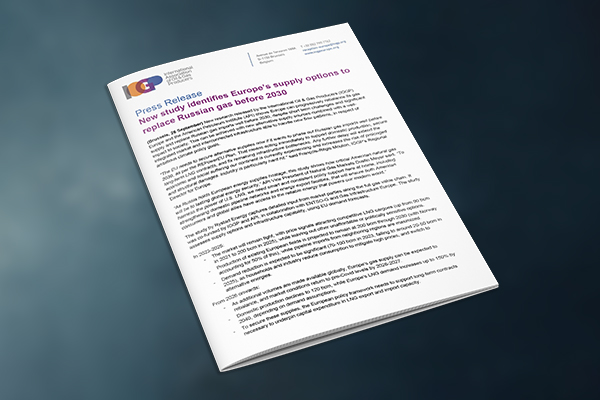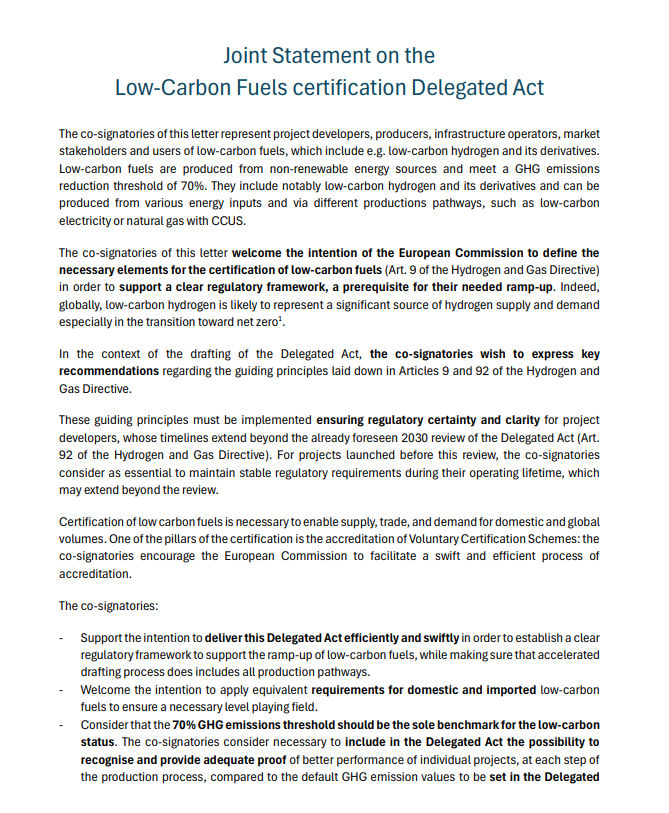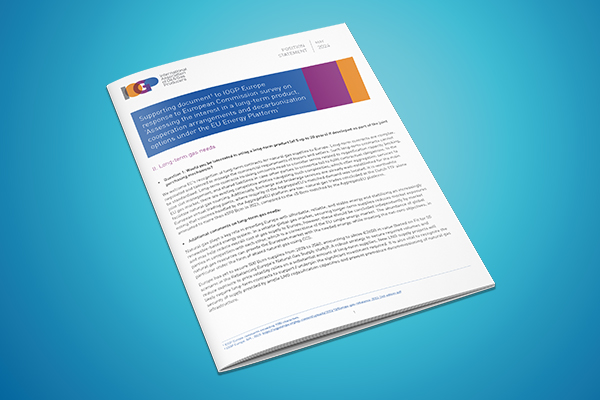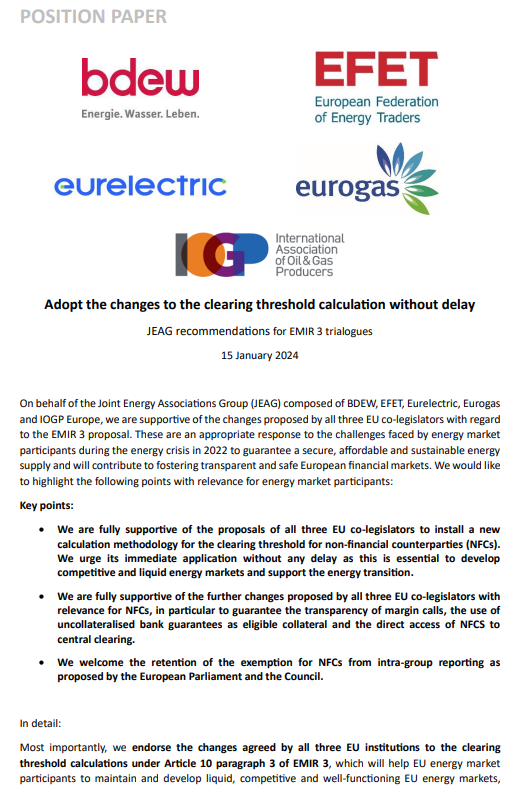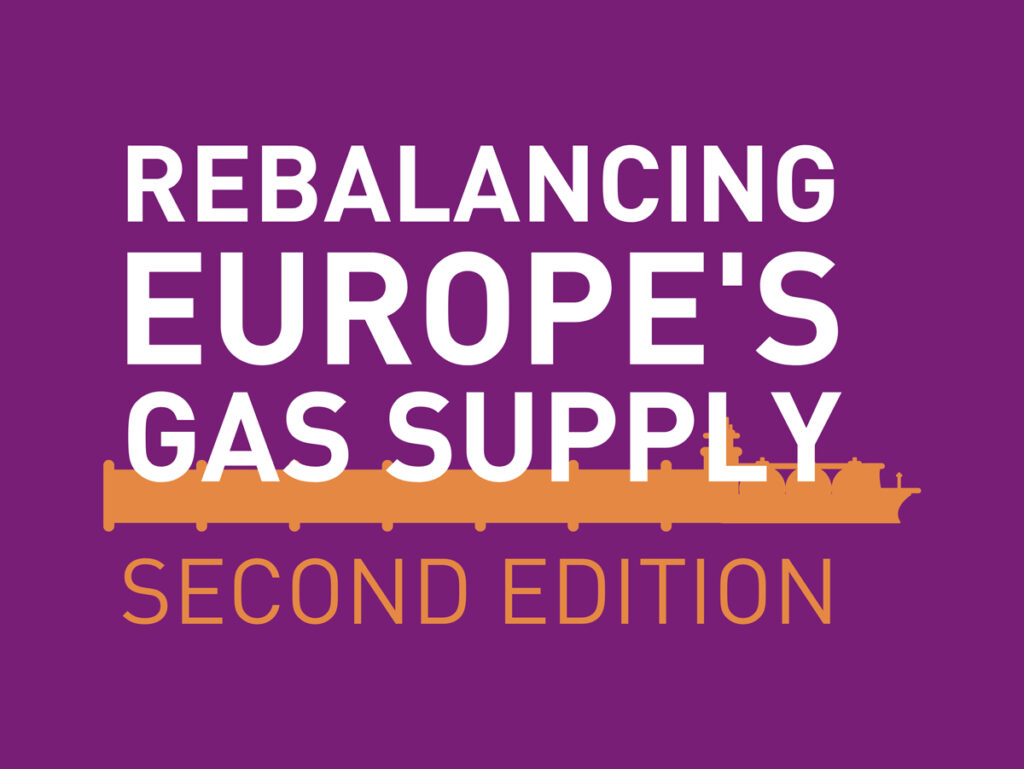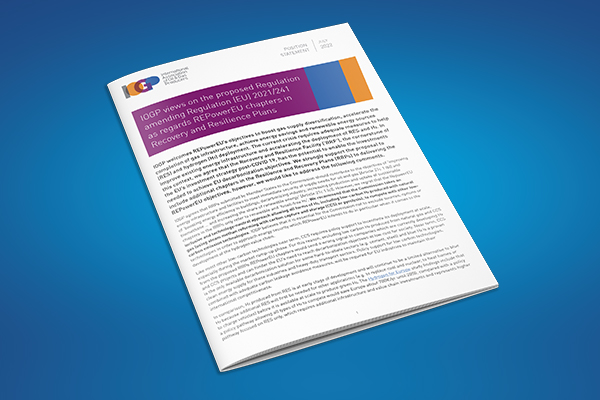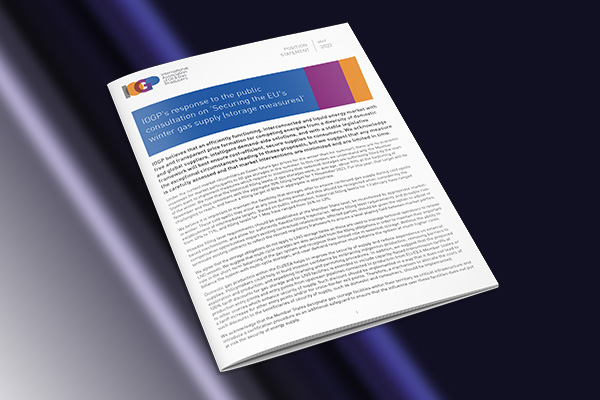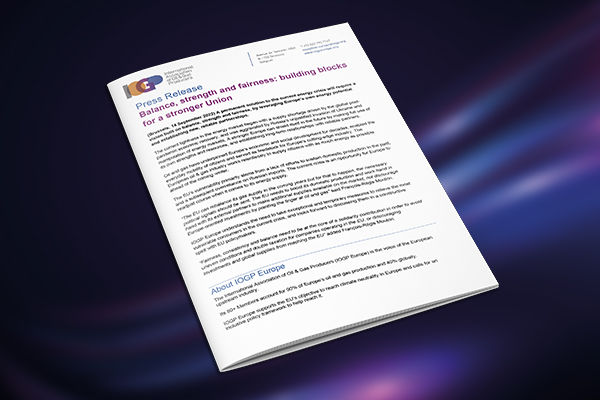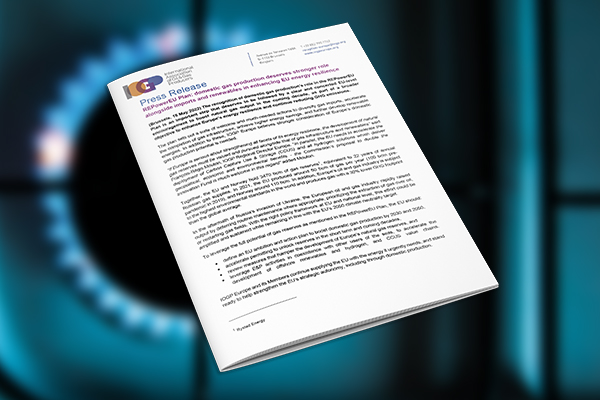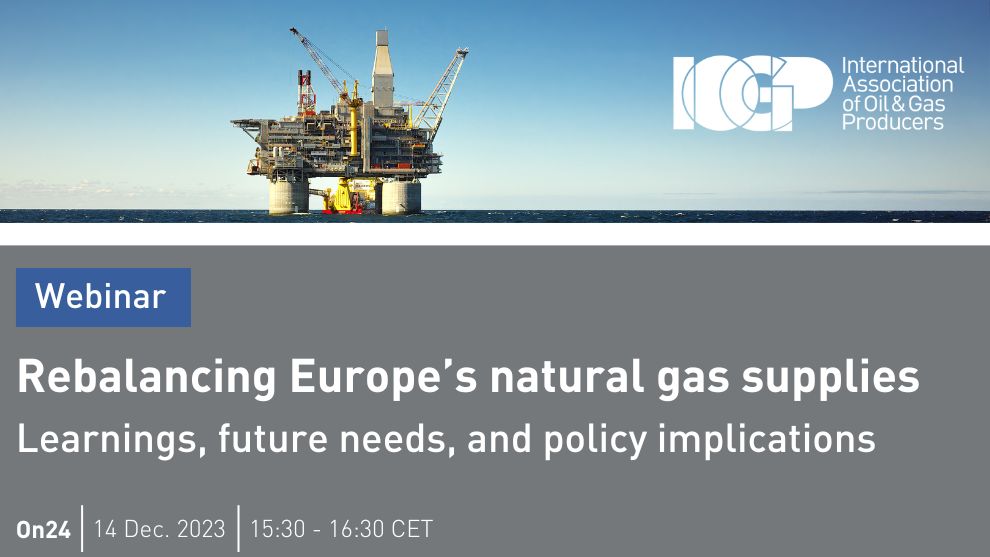New study identifies Europe’s supply options to replace Russian gas before 2030
Brussels, 26 September 2022
New research released by the International Oil & Gas Producers (IOGP) Europe and the American Petroleum Institute (API) shows Europe can progressively rebalance its gas supply and replace Russian gas imports well before 2030, despite short term challenges and significant impact to society. This can be achieved with new alternative supply sources combined with a wellintegrated market and interconnected infrastructure able to handle new flow patterns, in respect of ambitious climate policy goals.
“The EU needs to secure alternative supplies now if it wants to phase out Russian gas imports well before 2030, as per the REPowerEU Plan. That means acting immediately to support domestic production, secure long-term LNG contracts, and fix remaining infrastructure bottlenecks. Any further delay will extend the economic and social suffering our continent is currently experiencing and increases the risk of prolonged and structural damages. Industry is particularly hard hit.” said François-Régis Mouton, IOGP’s Regional Director for Europe.
“As Russia holds European energy supplies hostage, this study shows how critical American natural gas will be to lasting global energy security,” API Vice President of Natural Gas Markets Dustin Meyer said. “To harness the power of U.S. LNG, we need smart and consistent policy support here at home, including strengthening domestic pipeline networks and energy export facilities, that will ensure both American consumers and global allies have access to the reliable energy that powers our modern world.”
The study by Rystad Energy captures detailed input from market parties along the full gas value chain. It was co-funded by IOGP and API, in collaboration with ENTSO-G and Gas Infrastructure Europe. The study assesses supply options and infrastructure capability, using EU demand forecasts.
In 2023-2025:
- The market will remain tight, with price signals attracting competitive LNG cargoes (up from 90 bcm in 2021 to 200 bcm in 2025), while leaving out other unaffordable or politically sensitive options.
- Production of existing European fields is projected to remain at 200 bcm through 2030 (with Norway accounting for 50% of this), while pipeline imports from neighboring regions are maximized.
- Demand reduction is expected to be significant (70-100 bcm in 2023, falling to around 20-50 bcm in 2025), as households and industry reduce consumption to mitigate high prices, and switch to alternative energies.
From 2026 onwards:
- As additional volumes are made available globally, Europe’s gas supply can be expected to rebalance, and market conditions return to pre-Covid levels by 2026-2027.
- Domestic production declines to 120 bcm, while Europe’s LNG demand increases up to 150% by 2040, depending on demand assumptions.
- To secure these supplies, the European policy framework needs to support long-term contracts necessary to underpin capital expenditure in LNG export and import capacity.
The study highlights the need for action by policymakers and regulators today, ranging from supporting domestic production to securing new supplies, while addressing remaining infrastructure bottlenecks. Their decisions will directly shape the timing and ability of Europe to phase out Russian imports, and return to pre-Covid market conditions, while strengthening security of supply and meeting its climate objectives.
